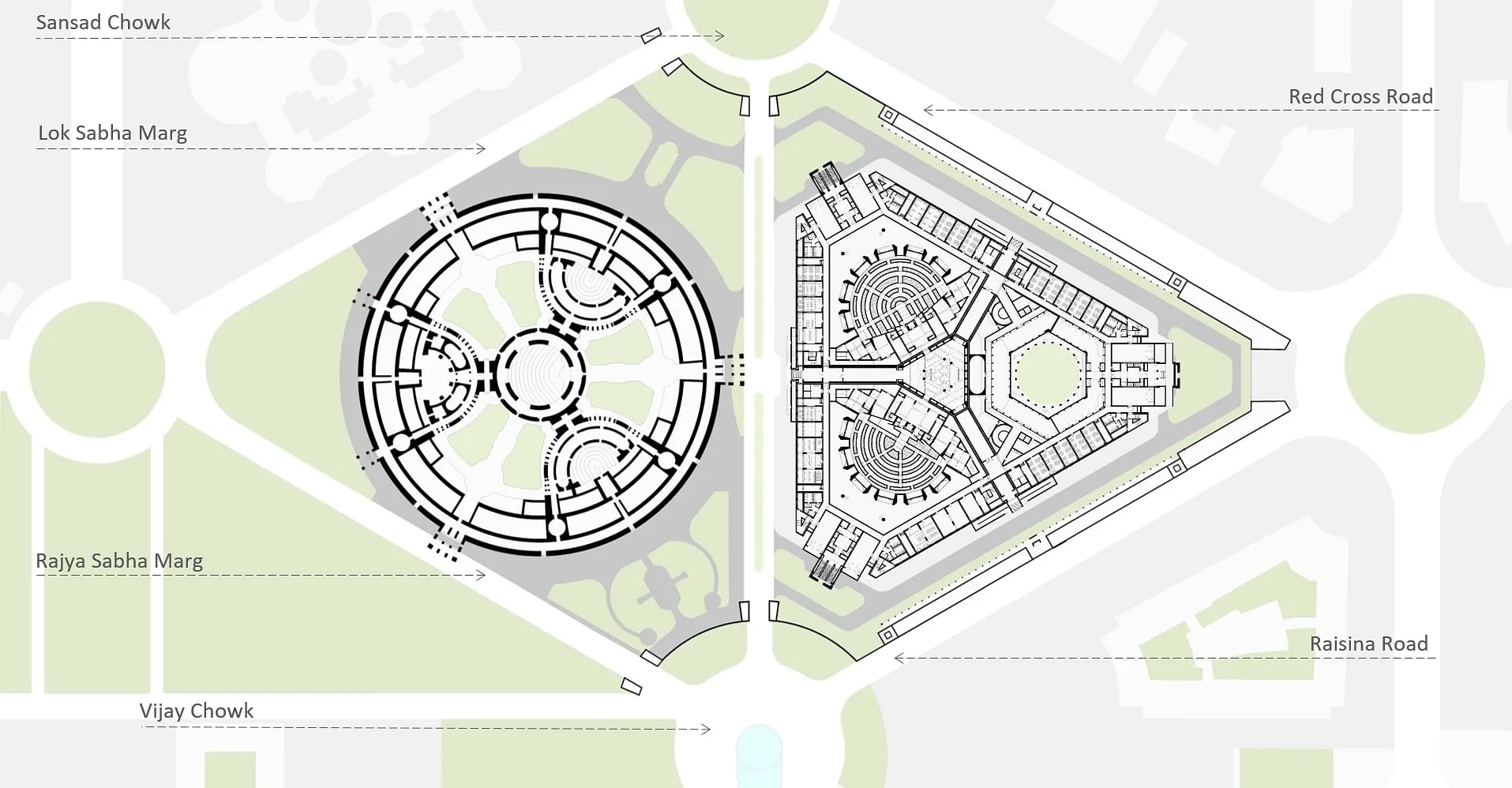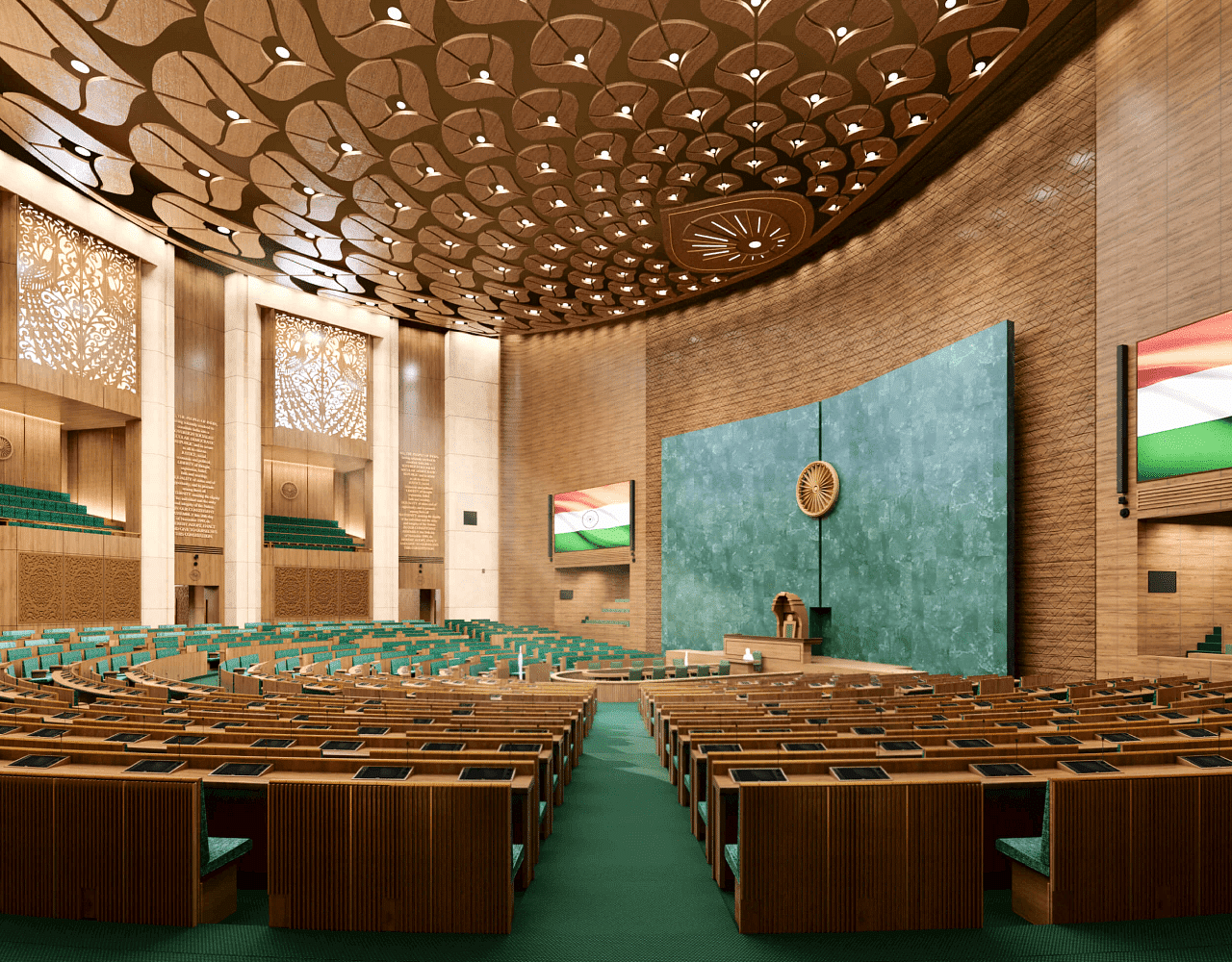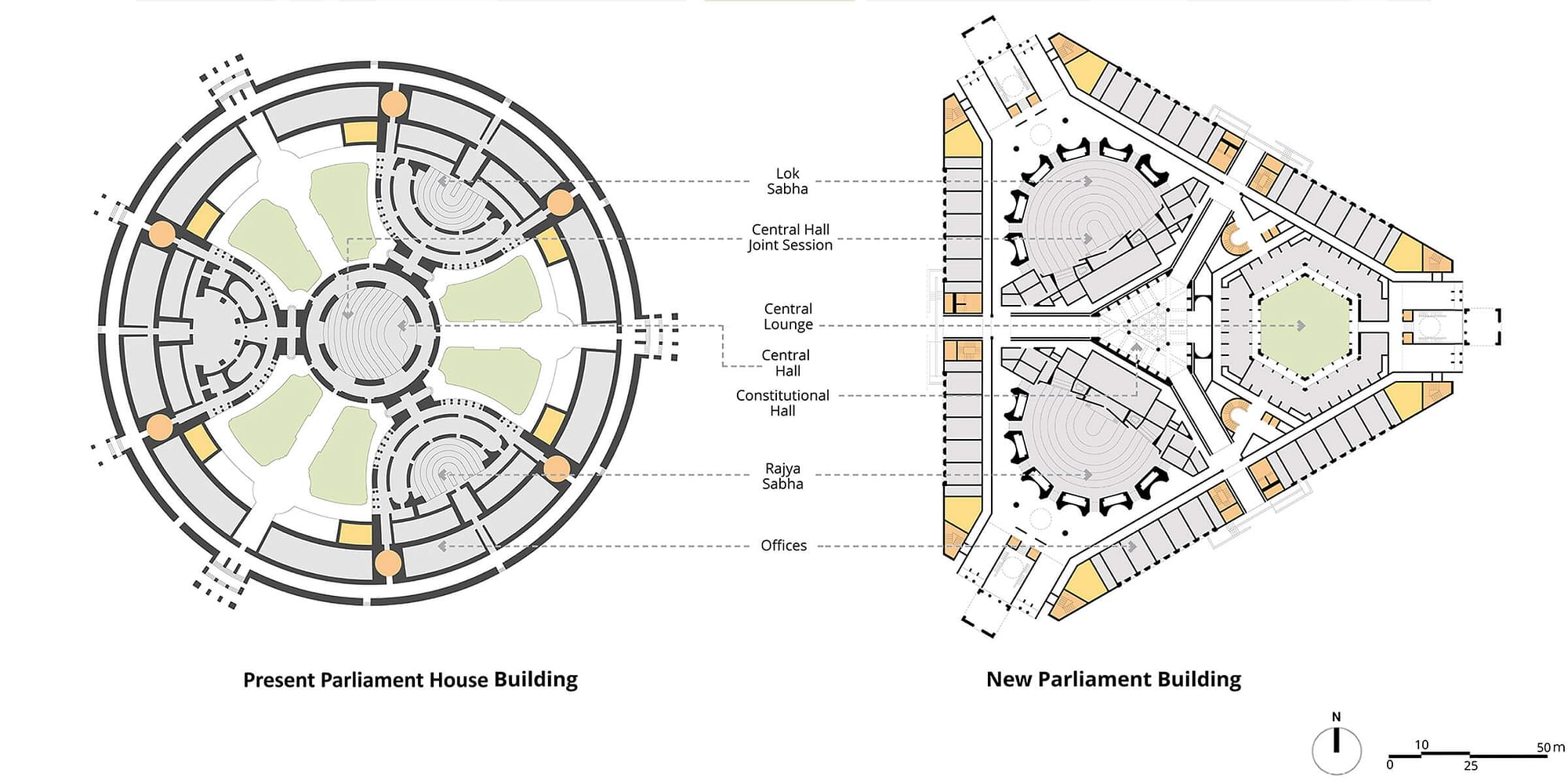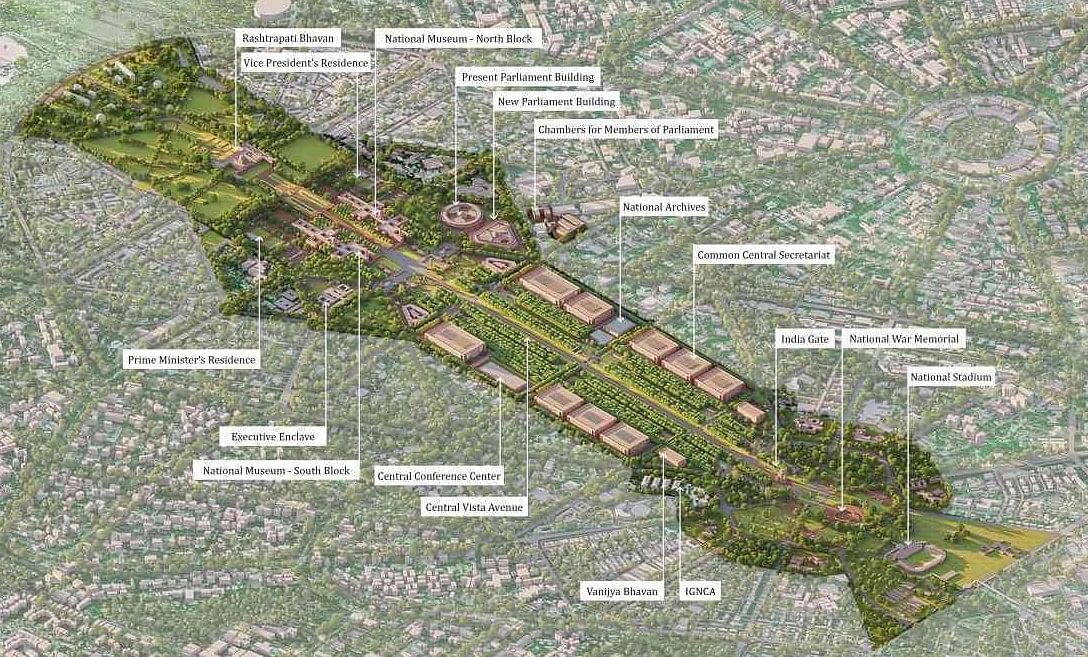India’s older Parliament House was completed in 1927 — making it almost 100 years old. Both the Lok Sabha and Rajya Sabha passed resolutions urging the government to construct a new Parliament building.
In addition to providing larger Lok Sabha and Rajya Sabha halls, the new Parliament has been thoughtfully planned to incorporate essential facilities, including committee rooms, key offices of the Ministry of Parliamentary Affairs, and the Lok Sabha Secretariat and Rajya Sabha Secretariat.
On May 28, Prime Minister Narendra Modi is set to inaugurate India’s new Parliament building situated in Delhi’s Central Vista.
Built at an estimated cost of Rs 970 crore, the newly constructed four-storey building covers a vast area of 64,500 square metre and will showcase an impressive collection of almost 5,000 art pieces.
The location chosen for the new Parliament is a triangular plot adjacent to the existing Parliament House.
The foundation stone for this significant structure was laid by the Prime Minister in December 2020, and its construction has been executed by Tata Projects Limited.
Designed and conceptualised by HCP designs, its Chief Architect Bimal Patel had said that the new Parliament building incorporates the elements of India and will showcase India as a rising power.
Embracing the triangular plot, the architects purposefully designed the new building in the form of a triangle, not only to optimise the utilisation of space but also to embrace the profound “geometric significance” associated with the shape.
Bimal Patel said, “As many people ask me why a ‘Triangle’, I say it is because many sacred geometrics celebrate “Triangles” and “Trinities”. The Sri Yantra uses a Triangle, the three gods or the Trinities are a Triangle and therefore Triangle is sacred.”, as per a report by The Sunday Guardian.
Within the triangular structure, the Lok Sabha will find its place in the north-west corner, while the Rajya Sabha will be situated in the south-west corner. Additionally, the lounge area will occupy the eastern corner of the building.

The New Lok Sabha And Rajya Sabha Houses
The Lok Sabha Hall in the new Parliament will have a seating capacity of 888, as against 543 in the old Parliament House.
The Rajya Sabha hall is designed to have a seating capacity of 300, as compared with 250 in the previous hall.
The new Lok Sabha chamber is three times bigger than the one in the existing building, reported Business Standard.
It will also have an additional capacity — of up to 1,140 seats — to host joint sessions of both houses, since there is no Central Hall in the new Parliament.
Historically, joint sessions of the two houses in the old Parliament were conducted in the Central Hall — which can accommodate 436 individuals with extra seating arrangements required for these sessions.
The new design adheres to a traditional colour scheme, with green and red theme for the Lok Sabha and Rajya Sabha, respectively.
However, the architects have incorporated numerous elements inspired by India’s rich cultural heritage into the design of both Houses.
“The theme of the Lok Sabha is kept, keeping in mind the national bird, peacock, while the theme of the Rajya Sabha has been done with the Lotus in mind”, stated Bimal Patel.
Furthermore, the Lok Sabha incorporates the Peacock motif into its carpets and ceiling design, while the Rajya Sabha’s ceiling design is inspired by the Lotus motif.


Additionally, unlike the old Parliament building, both Houses of the new Parliament will benefit from ample natural light.
To achieve this, the designers have crafted exquisite Jaalis adorned with Peacock and Lotus motifs with verses from the Indian Constitution inscribed in them.

(Source: HCP Design)
Features Of The New Purpose-Designed Parliament Building
In addition to provide larger Lok Sabha and Rajya Sabha halls, the building has been thoughtfully planned to incorporate essential facilities, including committee rooms, key offices of the Ministry of Parliamentary Affairs, and the Lok Sabha Secretariat and Rajya Sabha Secretariat.
Surrounding the chambers and the lounge area, the complex will feature offices positioned along the outer edges of the building.
These spaces will serve not only as offices for Ministers, the Prime Minister, and the Speakers of the Houses but also include dedicated offices for MPs, as is the norm globally.
The building will feature museum-grade galleries and exhibits that will be open to the public.
The central space of the building, with arms leading to entrances — is called the Constitution Hall.
The three entrances that lead to this Constitution Hall will be public galleries, showcasing the Indian Constitution and other artefacts of India’s heritage.
The absence of a Central Hall would be fed by a huge central lounge — an open courtyard constructed at an area of 2,000 square metre.
Moreover, the new complex has three doors – Gyan Dwar, Shakti Dwar, and Karma Dwar — with separate entrances for members of Parliament, VIPs and visitors.
The complex’s design will integrate cutting-edge infrastructure and technology to enhance the functioning of the Parliament.
The furniture in the debating halls will be equipped with advanced features such as smart displays and biometrics to facilitate seamless voting through an intuitive and graphical interface.
Additionally, the complex will house digital language interpretation and recording infrastructure, enabling the generation of real-time metadata.
The National Emblem will crown the new Parliament building which was unveiled by the Prime Minister in July, 2022. The 6.5-metre-high bronze emblem weighs 9,500 kg.
An Iconic Symbol At The Heart Of The Central Vista
The new Parliament building has been designed in synergy with the existing Parliament building, and drawn inspiration from other historical structures within the Central Vista — the administrative core of the country in the capital city.
India’s older Parliament House is a colonial-era building designed by British architects Sir Edwin Lutyens and Herbert Baker, completed in 1927 — making it almost 100 years old.
The decision to construct a new Parliament building stems from the limited space and the necessity for modernisation. The Parliament building witnessed the addition of two floors in 1956 to address the demand for more space.
Both the Lok Sabha and Rajya Sabha passed resolutions urging the government to construct a new Parliament building.
The existing structure was never designed to house a bicameral legislature for a fully-fledged democracy. Consequently, extensive modifications were made to accommodate the requirements of a modern Parliament.
The opening of the new Parliament additionally marks a significant progress in the development underway of the Central Vista.
A joint Central Secretariat, a new Prime Minister’s residence, a new Prime Minister’s Office, a new Vice-President’s enclave, as well as revamped Kartavya Path are also part of the redevelopment project.
The ambitious project, headed by Central Public Works Department (CPWD), will be built at a cost of Rs 13,450 crore between 2020 to 2026.



